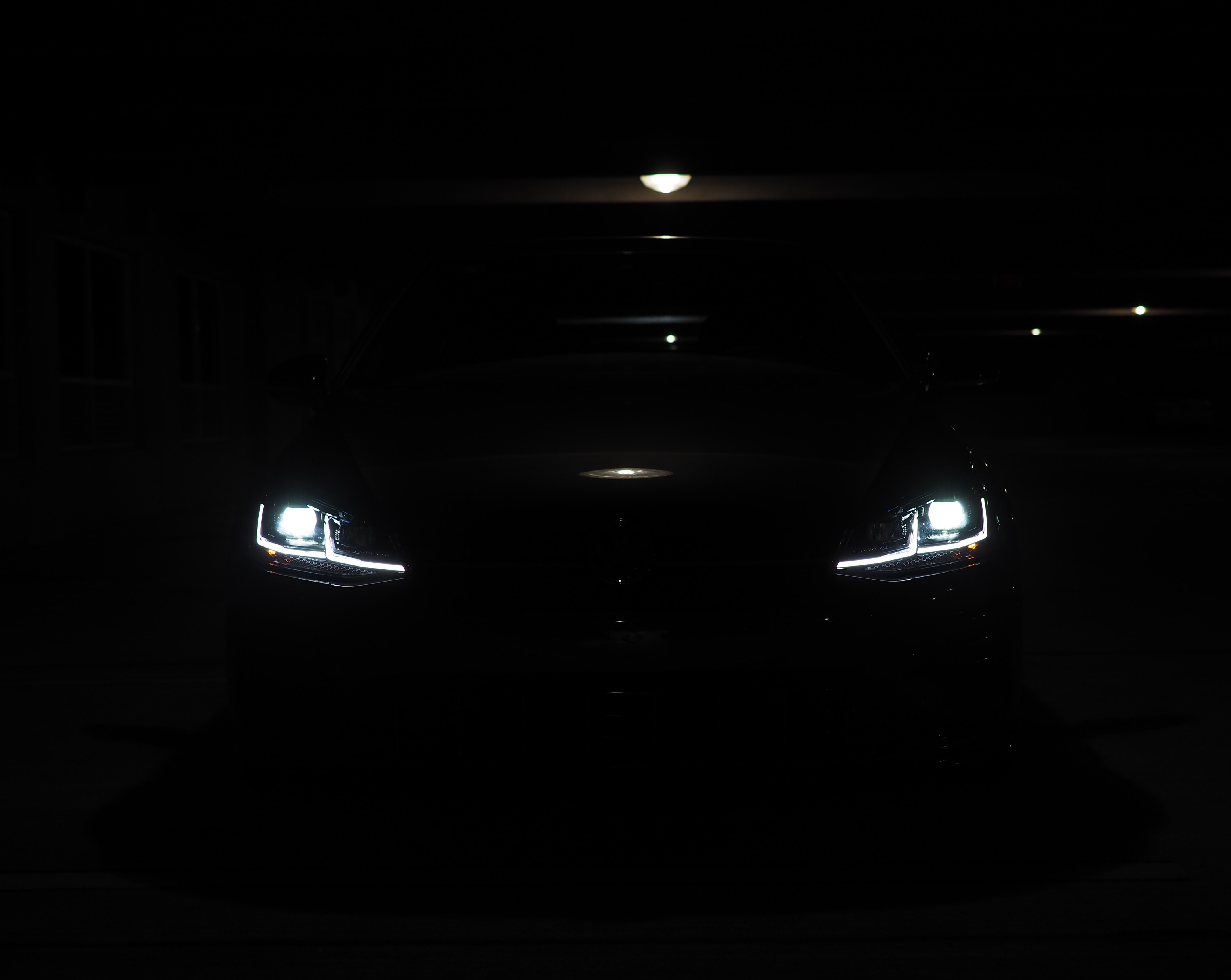
I have a problem.
My car is constantly in the shop. Since purchasing my 2011 BMW 335i xDrive in 2012, we’ve put around $10,000 worth of repairs into it. That is not a typo. Additionally, BMW has foot the bill for another ~$5,000. A total of roughly $15,000 spent in repairs in my six years of ownership; my time with the car started less than two years into the car’s life.
I love my car… when it works. But with each passing mile, my confidence in it wanes. Mechanics can fix the car; no mechanic is good enough to repair my confidence. It’s time for something new.
On paper, what I want is another BMW: a 340i or M3. But I look at the price tag, and I realize it’s more than I can afford. Even if I could afford it, I can’t bring myself to try another BMW. I need a break, and my confidence needs to rebuild.
So what do I do?
I want something that’s three pedals, four doors, reasonably nice, reasonably fast.
Options:
- Audi A4
Possibly a bit too slow; definitely a bit too expensive. - Civic Type R
I’m not sixteen. - Ford Focus ST
I’m not twenty one. - Ford Focus RS
I’m not eighteen. - Honda Accord
I’m not forty. - Volkwagen GTI
A smidge too slow.
However, Volkswagen has an ace in the hole.
Enter the Volkwagen Golf R.
Video
As with all Casey on Cars reviews, I have filmed and produced a video about the Golf R. I’d really appreciate it if you could watch it, throw it a 👍, and even subscribe to my YouTube channel. I still have plenty of ways to grow as a YouTuber and car reviewer, and I already have plans I’m really excited about for the next edition of Casey on Cars.
More and Liss Less
The Golf R is, on the surface, little more than a GTI cranked to 11. However, upon closer inspection, it’s quite a lot more than that… while also being less than that.
The Golf R is the latest in a line of cars that began with the R32 in the early aughts[1]. The most hot-roddy of all the hot-rod editions of the Golf, it is Volkswagen’s offering as the pinnacle of performance in a utilitarian body. The hottest of Volkswagen’s hot hatches. (Though interestingly, Volkswagen’s web site presents the GTI as a hot hatch and the R as a performance hatch.)
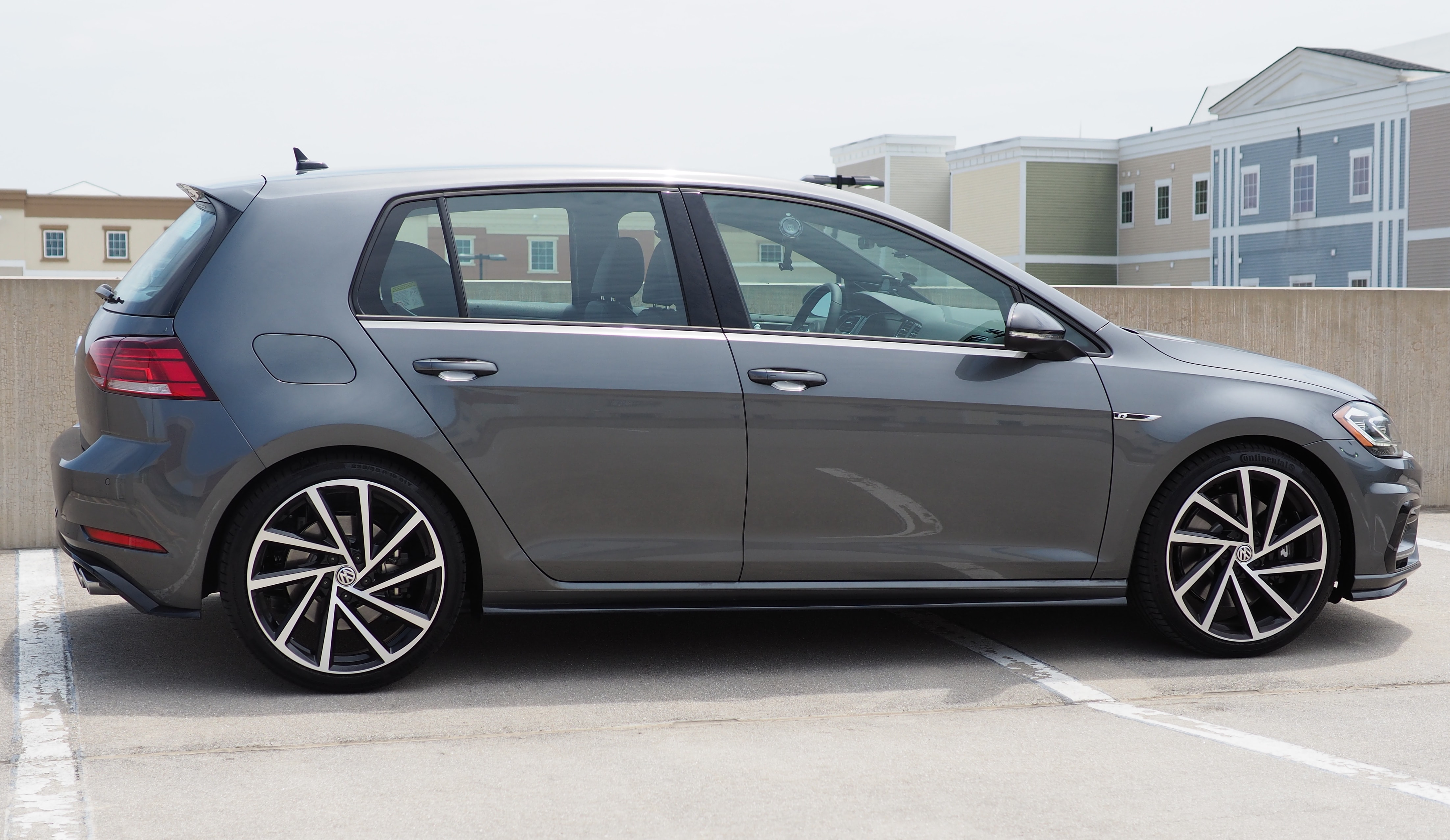
At a glance, there are a few major changes from the GTI. The Golf R:
- Has a Haldex all wheel drive system
- Has more power:
- Horsepower is bumped from 220 → 292, a ∆ of 72 HP
- Torque is bumped from 258 → 280, a ∆ of 22 lbft
- Is made in Germany (the GTI is actually assembled in Mexico)
- Has Volkswagen’s new “Digital Cockpit” instead of traditional analog gauges.
- Has an electronic parking brake
However, not everything is a victory. The Golf R:
- Lacks a sunroof
- Cannot park itself
- Is a shade under $5,000 more than a loaded GTI
So, which is the one to buy?
I got to spend a full week with the Golf R, just a couple weeks after I spent about 20 minutes with a former colleague’s GTI. Though I’d love a lot more time with the GTI for a proper comparison, I spent enough time with the GTI to get the gist.
Exterior
The Golf R is very quiet about the fact that it’s the fastest of all the Golfs.
There is only one R badge for each side of the car. In fact, the most
ostentatious part of the car is probably the quad exhausts in the rear. Despite
being both visually and aurally loud, I quite like them.
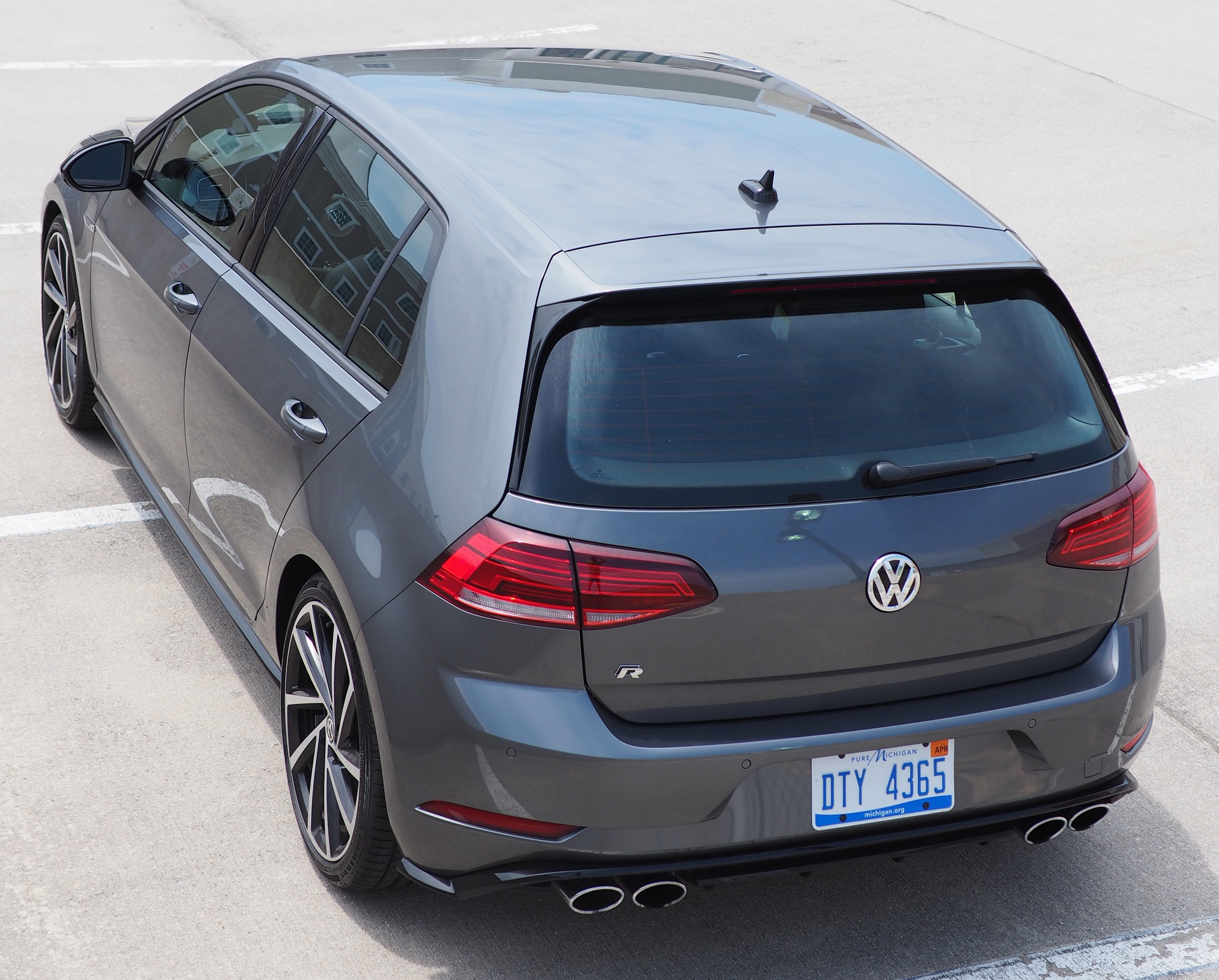
Things are not all perfect, however.
Those wheels. What is going on with those wheels?
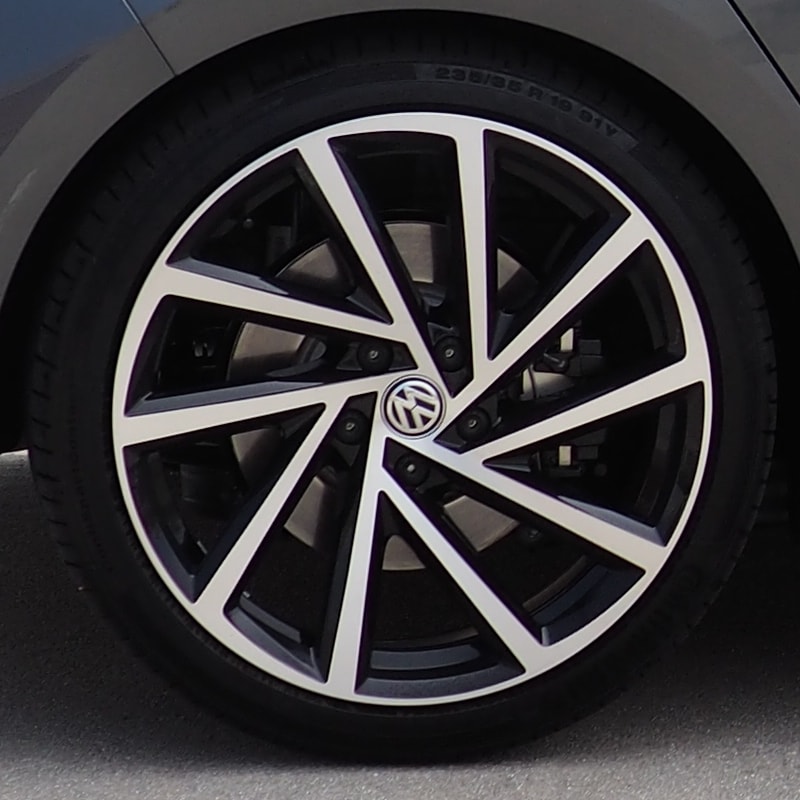
Known as “Spielberg” or “Englishtown” wheels, I really dislike them. Furthermore, adding insult to injury, I loved the 2017 Golf R’s “Pretoria” wheels:
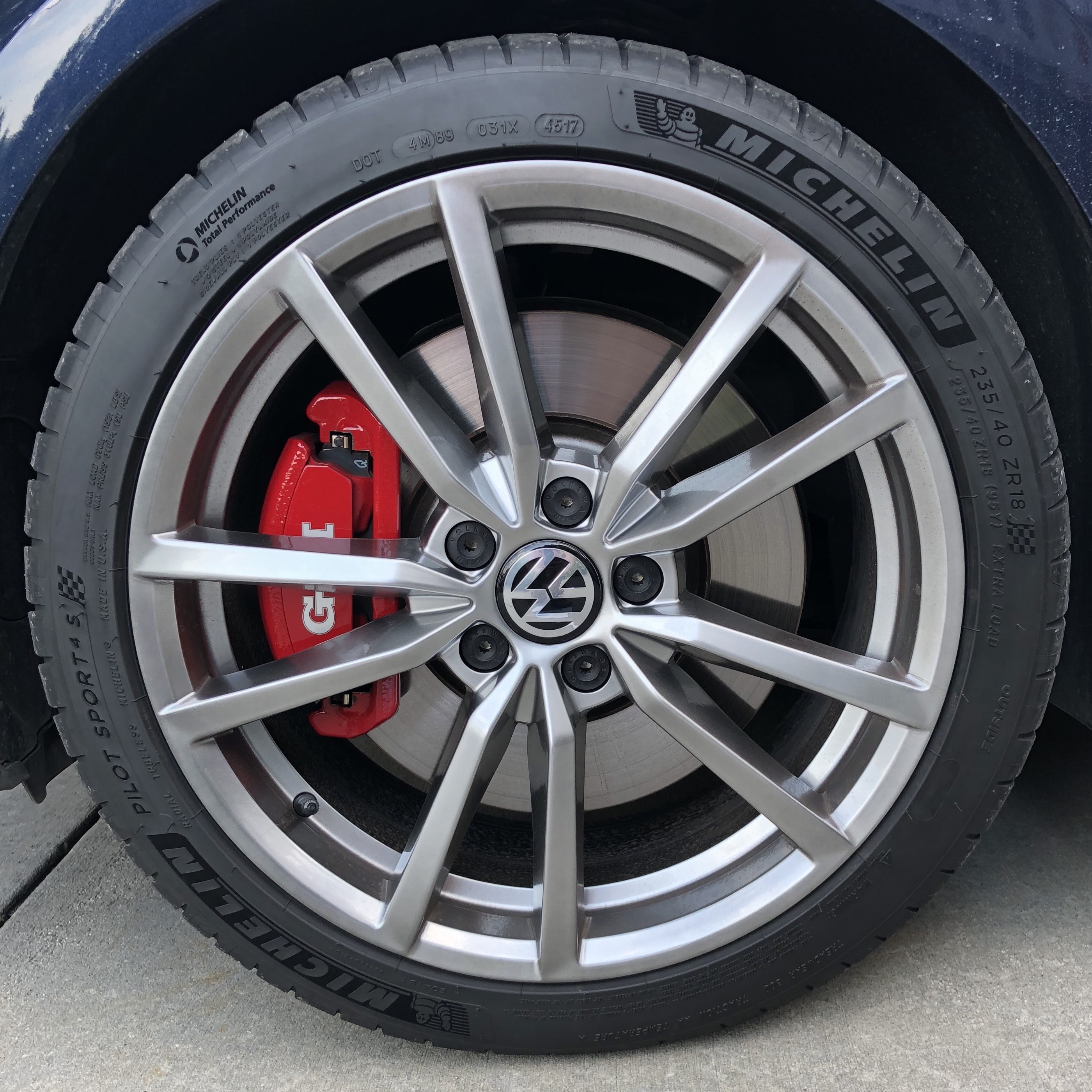
I know wheels are an easy thing to change, but Volkswagen, your wheels. Woof.
Interior
The interior of the Golf R is a fine place to be. It does not feel like a Volkwagen to me, but rather, more like an Audi. In fact, I spent a very very short amount of time in a brand-new A4 this past weekend, and in many ways I think the Volkwagen was laid out more logically, while feeling no cheaper than the Audi.
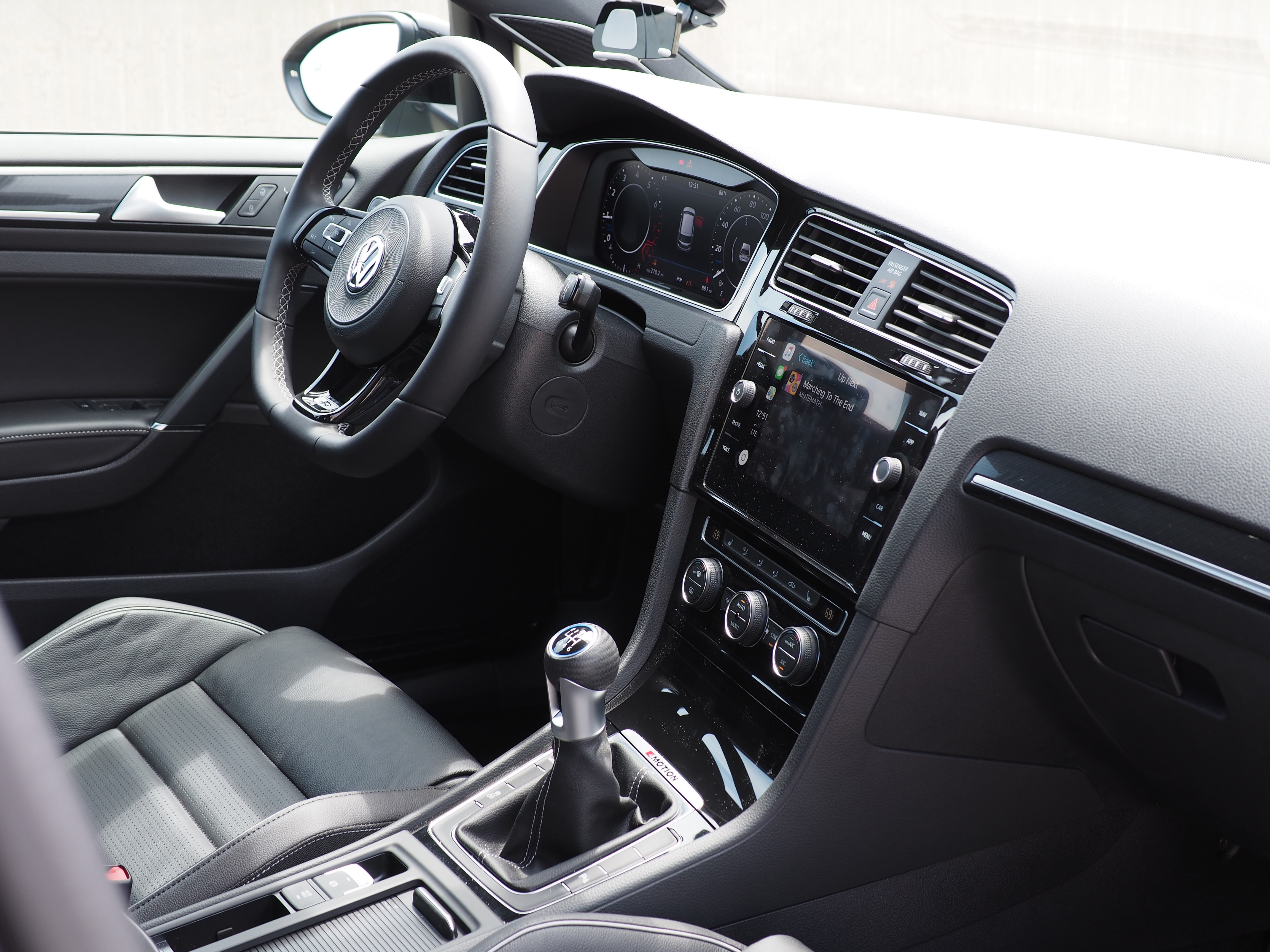
The seats are comfortable and the side bolstering in the front is more than sufficient. Quite oddly, however, the driver’s seat was 100% electric, but the passenger seat was almost entirely manual. Only the seatback’s tilt was electric. It was a very peculiar choice; I almost feel like for consistency’s sake, the tilt should have been manual too. Nevertheless, the rear has ample legroom; I was surprisingly comfortable in the back, and didn’t long for more space.
All the way in back, things were hit and miss. The Golf is a hatchback, and as such, the opening to the trunk is massive. However, there is almost no depth to the trunk; it is far shallower than my BMW. Quite obviously, it is considerably taller than my BMW’s trunk, but given the choice, I prefer my volume by way of increased “surface area” rather than height.
With the rear seats folded down, the Golf is cavernous. However, it’s unsurprisingly impossible to fold the seats down when you have two small children, each of whom comes with one large car seat. Thus, for me, today, the trunk is far smaller than I’d prefer, unless I’m willing to stack things on top of each other.
Back in the driver’s seat, I could make an argument that the Digital Cockpit is a mistake, as it will look dated in a few years. Be that as it may, the flexibility of the dash makes me think it’s the right answer. Being able to see a map of where the navigation is directing you right in between your speedometer and tachometer is pretty great. Furthermore, the configurability of the Digital Cockpit is enough to keep me busy for quite some time. I count it as a win.
Curiously, the R also exposes its heritage as an affordable car. Most European cars equipped with an automatic transmission have a “kickdown” switch. When you floor the car, and then press the pedal just a bit further, the car takes that as “GIVE ME ALL SHE’S GOT”. It will downshift as much as possible, in addition to the car already being floored. The Golf R I drove had a kickdown switch. The manual Golf R I drove… had a kickdown switch. Which does absolutely nothing. Apparently the Volkswagen parts bin had it on special!

The GTI and R alike also suffer from a fatal flaw: the volume and on/off button for the infotainment. The button has a standard power icon on it, which makes perfect sense. However, that power icon twists when you adjust the volume. As someone who is, shall we say, a touch anal-retentive, this is infuriating. The problem is fixed by only adjusting the volume via the steering wheel controls, but, hoo boy, it’s annoying.
The Golf does have lane keeping aids and automated cruise control, but it doesn’t have full-on automated piloting, which is too bad. The controls for all of these automated driving aids are pretty straightforward. The lane keeping, left to its own devices, will basically ping-pong between the edges of the lane, but it’s not comparable to true automated driving systems like the one on Erin’s XC90.
The Golf does best the Volvo on the way it displays your desired versus actual speed when using cruise control. When in Erin’s car, I often find myself camping in the slow lane for a while, going well under the speed limit, because it’s not entirely obvious that the car has slowed under my desired speed due to traffic. In the Golf R, it helpfully has a thick red bar to indicate the car has slowed below its cruise setting; it shows a thick green bar if you manually accelerate over the cruise setting.
The infotainment is good, but largely unremarkable. The same goes for the navigation. One could argue “unremarkable” is the mark of a successful implementation — a system that doesn’t get in the way is in many ways a great system. Additionally, the infotainment supports both CarPlay and Android Auto, which I consider to be requisite on any car I will buy in the future.
Driving
The Golf R shines on the road. The interior may be confused as to whether the Golf R is a luxury car or not. The driving experience removes all doubt about how it behaves on the road: this is a performance car.
It took me almost no time to fall in love with how the Golf R feels.
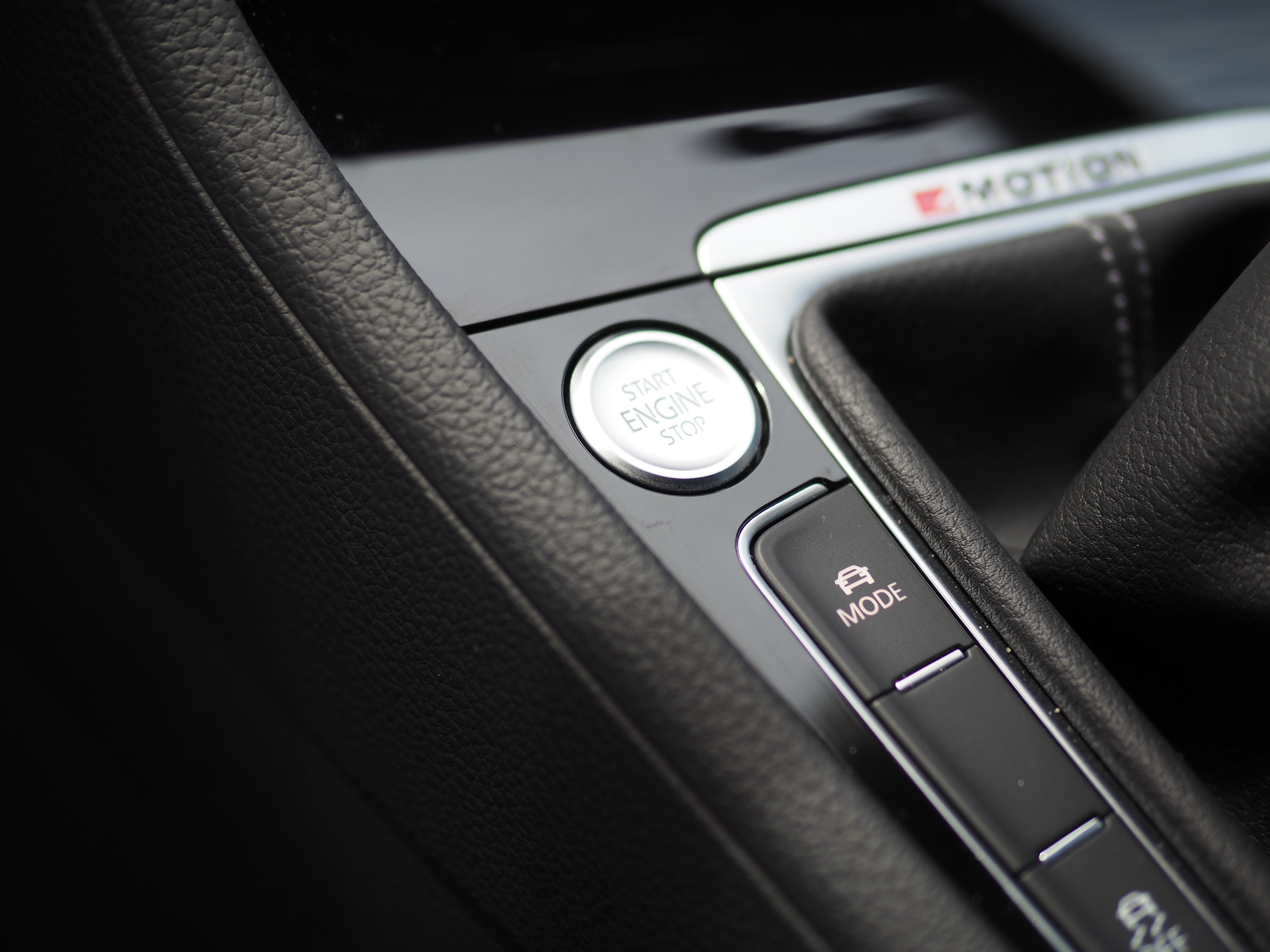
My love of the R began the first time I took off from a stop. I’ve driven a stick since I got my license 20 years ago. Every time I drive a new-to-me car that has a standard transmission, it takes me a couple hours/days/weeks to really get the feel for that car’s clutch. With the R, I felt like I had already driven the car for weeks.
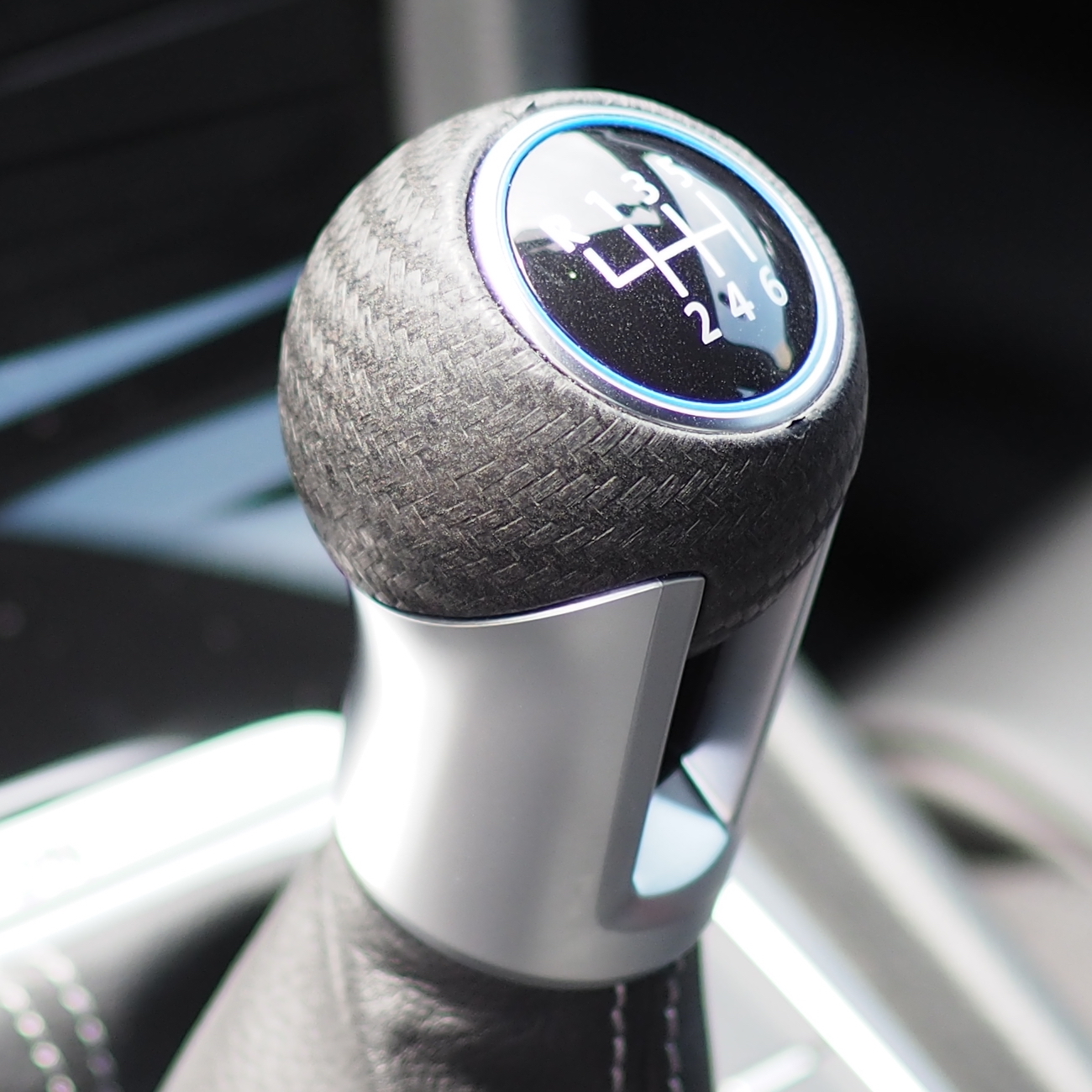
The gearshift was also interesting. The feel in the hand was okay but not great; the knob felt a bit like a golf ball, which I can’t say I loved. Unlike almost all other cars with a front-mounted transmission I’ve driven, the shift linkage felt really good. It was way crisper and more notchy than I expected. There was one small curiosity about it, though: the lateral distance between gears — 1st and 3rd / 3rd and 5th / 2nd and 4th / 4th and 6th — was very small. It was by no means a problem, but it was something I noticed every time I drove the car.
All that said, even if the shift linkage was garbage, and even if the clutch was difficult, I’m still thankful that Volkwagen even offers a stick. I know that my time is running out with three-pedal cars, and I’m glad I don’t have to give up on my dream yet.
When treated with a gentle foot, the Golf R is true to its humble economy car roots. It’s docile, reasonably quiet, and not too twitchy. The suspension is rougher than I appreciate; however, that’s par for the course when it comes to a performance car. The suspension is adjustable — and I did adjust it — but I never found it to be quite as compliant as I’d like.
Once you give the Golf R some throttle, or switch the drive mode from Eco or
Normal to Race, or perhaps Custom[2], everything changes.
The Golf R is one of the best point-and-shoot cars I’ve ever driven. Perhaps the best. Even with my preferred but very-driver-involved transmission, the R goes where you ask it to. No matter how much throttle you give it. No matter what steering angle. No matter what speed. The Golf R figures it out.
In essence, the R looks at the laws of physics, thinks for a moment, and then comes to a conclusion: “No, thank you.”
I took turns that were entirely too sharp, with entirely too much speed, giving the car entirely too much throttle, and there was no drama. Every single time. The R just ate it all up.
It was intoxicating.
In a straight line, the R is very fast; it will hit 60 MPH in just barely over 5 seconds with a skilled driver. The dual-clutch R, with its launch control, can do it in just under 5 seconds. All this in a car that can haul five people… and a dresser.
The only complaint I have is that the car definitely has turbo lag. If you stand on the throttle in the wrong gear, you’ll be waiting for a while until the turbo spools; at which point, you get walloped in the back. A smaller turbo (which would cost peak power), or more displacement (which would cost economy, among other things) would surely help alleviate lag. On the bright side, keeping the car in the meat of its power band encourages you to shift, which is the whole point of buying a stick in the first place.
I could go on and on about how it felt to drive, but there’s little more to say. Every on- or off-ramp was a rollercoaster ride. The power of the R is, in some ways, its Achilles heel: you want to drive it at 11/10ths, and to do so will guarantee you are well outside of what is acceptable on public roads.
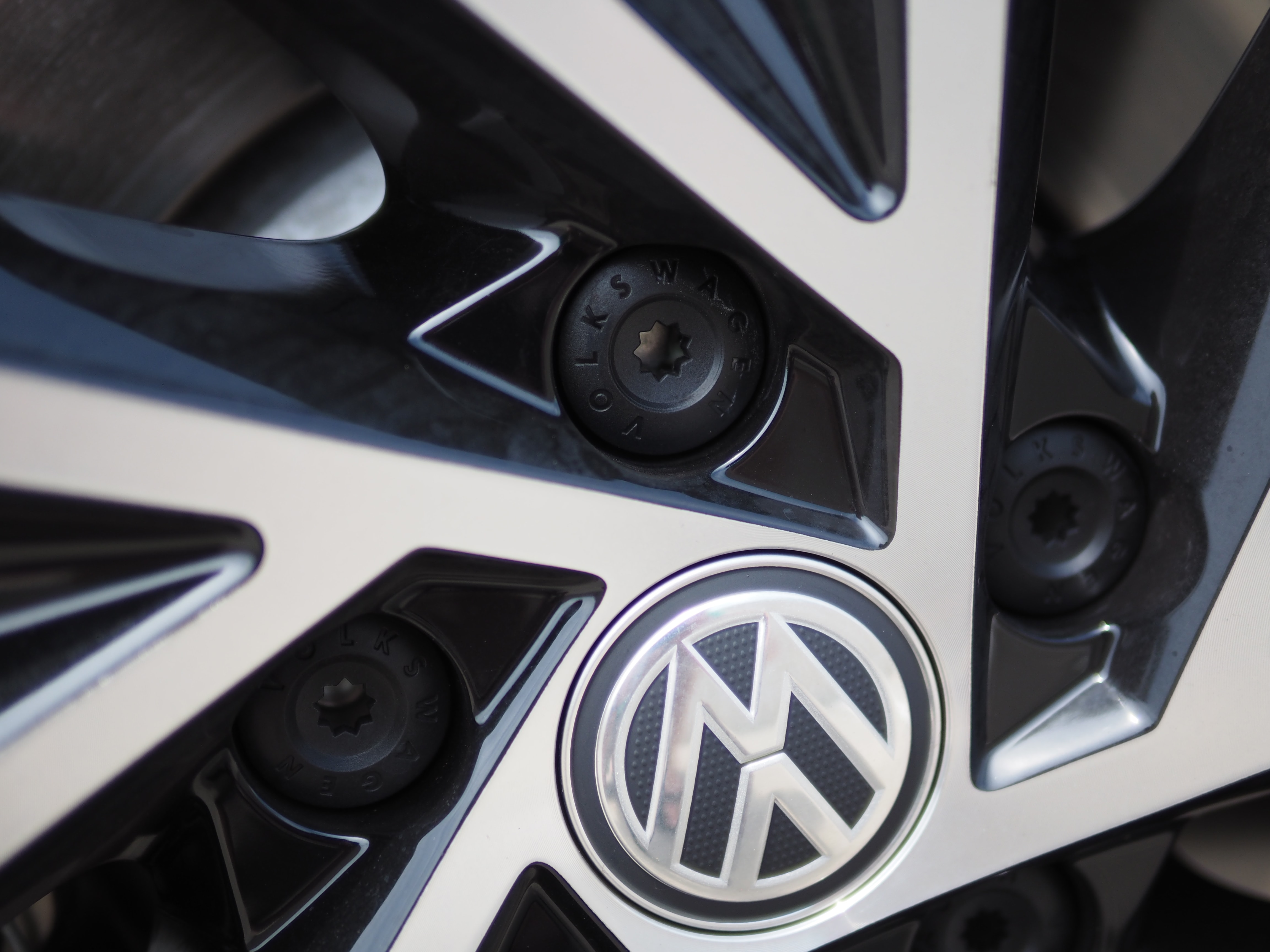
Looking to the Future
So, coming back around to the beginning, what do I do about my BMW?
When I drove the GTI, I was stupefied by how much car you got for the price. The one I drove was a bit over $30,000; it felt like it could have commanded a $40,000+ price tag.
The Golf R, by comparison, felt like it was every bit of its $40,680 MSRP. And in some ways, it felt like it should have been less. The lack of a sunroof is infuriating to me — at least give me the option, Volkswagen! While the R felt quite a bit more powerful than the GTI, it also felt like it was missing things for no discernible reason.
However.
Were I to buy a Golf R, I would miss the sunroof a lot. I’d miss it for easily six months of the year, if not more.
Should I buy a GTI, I’d miss the Golf R’s power… every time I drove my car. And, for the handful of snow storms Virginia gets each year, I’d miss the all wheel drive too.
Given the life changes my family has been through lately, we’re currently exploring the possibility of being a one-car family. Should we decide to get something new, I’m almost certainly going to get myself a Golf R.
One could make an argument the R is actually from a line that started with the original Audi TT, but now I’m splitting hairs. ↩
Unlike most cars I’ve driven, the Golf R actually remembers the drive mode you were in when you last drove the car. ↩